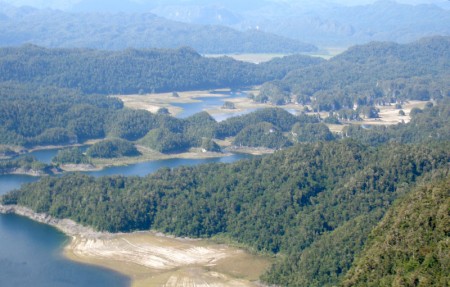At the end of the Miocene (11-9 MY), the subduction of the Australian tectonic plate under the Pacific plate resulted in the Lengguru accretionary prism and its emergence above sea level.
The alternance of mountainous wedges and isolated valleys (i.e. Endorheismendhoreic[/glossary]) which is characteristic of Lengguru was completed 7 million years ago.
First a link…
At the beginning of its genesis, the Lengguru massif acted as a terrestrial bridge between primitive New-Guinea and the Bird’s Head Peninsula – a block of continental crust which separated from Australia more than 30 million years ago and moved closer under the impulse of tectonic movements – potentially enabling exchanges between their respective fauna. More to the East, new subduction occurrences further allowed the formation of the mountainous range dividing New-Guinea lengthwise, with more than 5,000 metre high summits (16,500 ft.).
… then a natural barrier
Later, rising by several centimetres each year, Lengguru probably acted quickly as an organisms dispersal barrier between the Bird’s Head Peninsula and New-Guinea, on the one hand, and the Northern and Southern parts of New-Guinea on the other.
The significant rates of endemism that characterize the zoological populations of these three bio-geographical regions could therefore be due to the orogenesis of Lengguru and the great cordillera.
The discovery of primitive species, isolate within the heart of Lengguru for over 10 million years, will allow to test this theory, and also to calibrate through time the biological diversification processes for all the studied groups.

Lengguru landscape
© Vivien Bailly

